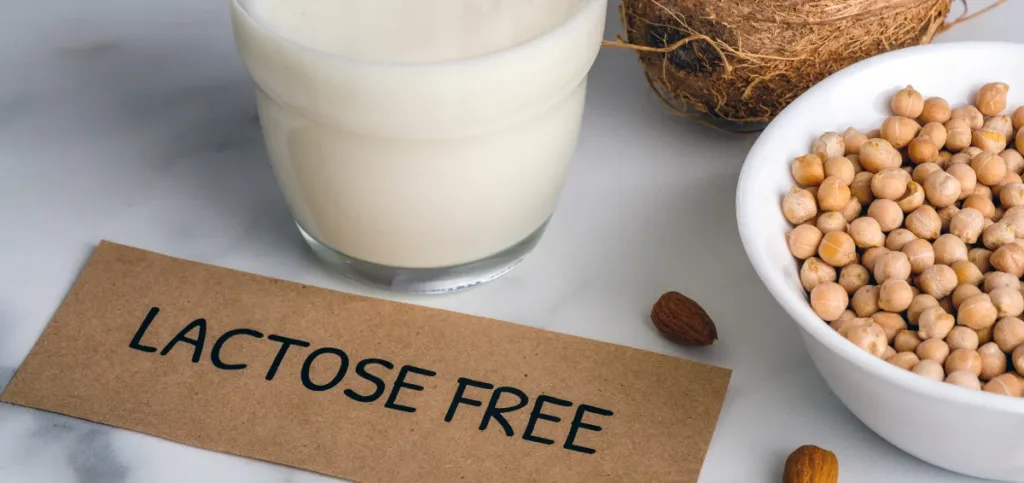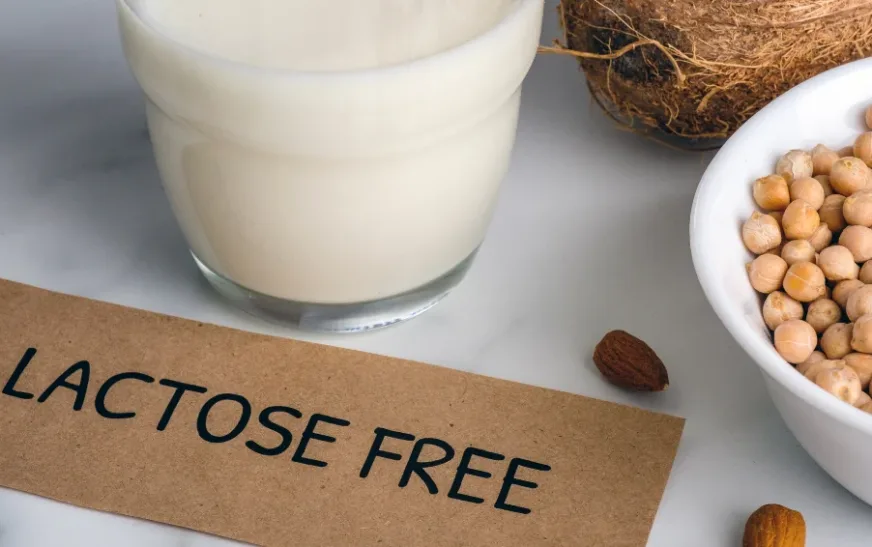
A glass of milk has been a comforting, refreshing, and staple drink in the diets of people worldwide. However, today, digestive issues after consuming dairy or regular milk are on the rise. This has led to an increase in alternatives. Lactose-free milk is one of the major alternatives to traditional cow’s milk. Now, it is seen competing with regular milk, leading to a question: “Which is better?” In this post, we’ll unearth the key differences and debunk popular myths, so you can enjoy the type of milk you want and benefit from better health.
What is Lactose-Free Milk?
Before learning about lactose-free milk, you must know what lactose intolerance is. Lactose is a sugar present in dairy products. Some people get uncomfortable digestive symptoms when they consume regular milk products with this sugar. This is why lactose-free milk is made by adding external sources of lactase. They break lactose into sugars, so that regular milk can be absorbed, and after absorbing these sugars, people with lactose intolerance don’t feel uncomfortable.
Some examples of lactose-free milk are soy milk, almond milk, coconut milk, oat milk, and the like.
Is Lactose-Free Milk Healthier Than Regular Milk?
Not necessarily. Lactose-free milk’s nutritional value is not very distinct from regular milk. It has the same amount of macro- and micronutrients as regular milk.
Here’s a nutritional comparison of both of them.
| Nutrient | Regular Milk (per cup) | Lactose-Free Milk (per cup) |
| Calories | 120 | 120 |
| Protein | 8g | 8g |
| Fat | 4.5g | 4.5g |
| Carbohydrates | 12g (as lactose) | 12g (as glucose or galactose) |
| Calcium | 300mg | 300mg |
| Vitamin D | Fortified | Fortified (if added) |
Does Lactose-Free Milk Taste Better Than Regular Milk?

If you like sweet things, lactose-free milk will taste better to you than regular dairy milk. There is science behind this experience. Your taste buds perceive glucose and galactose (the simple sugar that, along with glucose, forms lactose) as sweeter or more pleasant than complex lactose.
Read Also: Organic Milk vs Regular Milk
Once lactose breaks down, the flavours of the simple sugars turn more pronounced. Thus, you experience a sweeter overall taste of the drink. This type of milk is also creamier than regular milk, which is why it is used for baking and cooking. Sweet treats like muffins and cheesecakes taste a lot sweeter and better when using lactose-free milk than regular dairy milk.
Common Myths About Lactose-Free Milk
Although there is an increase in the popularity of lactose-free milk, it has also spawned many myths. It is necessary to debunk them, especially for people with lactose intolerance, so they have the satisfaction of consuming something that is equally beneficial for their health as normal milk.
Myth 1: Lactose-Free Milk is Not Real Milk
Lactose-free milk is considered real milk mainly because it is made from 100% real dairy. The only difference is that this milk is without the lactose sugar found in regular milk. Otherwise, it gives your body all the nutritional benefits of milk and dairy, just as it is 3 times sweeter than them, even though there is no sugar.
Myth 2: Only People With Serious Lactose Intolerance Can Consume Lactose-Free Milk
This is, again, a myth that prevents people from trying out lactose-free milk. While it is true that lactose-free milk is perfect for people with dairy allergy or if you are avoiding dairy for other reasons, even if you do not fall in this category, you can consume lactose-free milk. There is no harm in having it or products made using it. For example, there is no harm in trying out soy, coconut, oat, or almond-based milk.
Myth 3: Lactose Intolerance is the Same as a Milk Allergy
Lactose intolerance is very different from milk allergy. The cause of lactose intolerance is the absence of the lactase enzyme, which results in a digestive problem. Milk allergy occurs when your immune system reacts to milk proteins. It causes symptoms like hives, swelling, itching, wheezing, and even life-threatening anaphylaxis.
Myth 4: Lactose-Free Milk Still Has Lactose
Lactose-free milk may have residual amounts of lactose. The amount is not sufficient to consider the milk as having lactose. In the U.S., the current FDA standards say that any product is free of a substance if it has less than 0.5 grams of it per serving. In the case of lactose-free milk, the amount of lactose is usually under 0.01% lactose by weight. It means that this sugar is under 0.01 grams of lactose for every 100 grams of milk.
Myth 5: Lactose Varies Depending On the Milk’s Source
This is not true because all lactose is not equal. The sugar has the same molecular structure in every milk source. It means that breast milk lactose is not different from cow and goat milk lactose. Note that the amount of lactose and not its molecular structure is different in all sources of milk.
Who Benefits the Most from Lactose-Free Milk?
Many categories of people benefit from lactose-free milk. These include the following:
- People with lactose intolerance may feel bloated and nauseated after drinking regular milk.
- Athletes with lactose intolerance need calcium for muscle repair and bone health.
- Culinary creatives and bakers who desire enhanced sweetness and creamier texture in their offerings.
- Vegans who avoid all animal-based products and their derivatives benefit from plant-based alternatives to regular milk.
Read Also: Oat Milk vs. Almond Milk
Concluding Words
If you seek digestive ease and don’t want to sacrifice nutrition, opting for lactose-free milk is a good choice. However, it is not inherently healthier than regular dairy milk, as both have similar sugar, nutrition, and calorie content. If you can digest lactose without experiencing discomfort, feel free to explore both types of milk.










